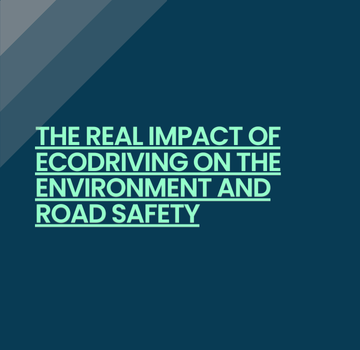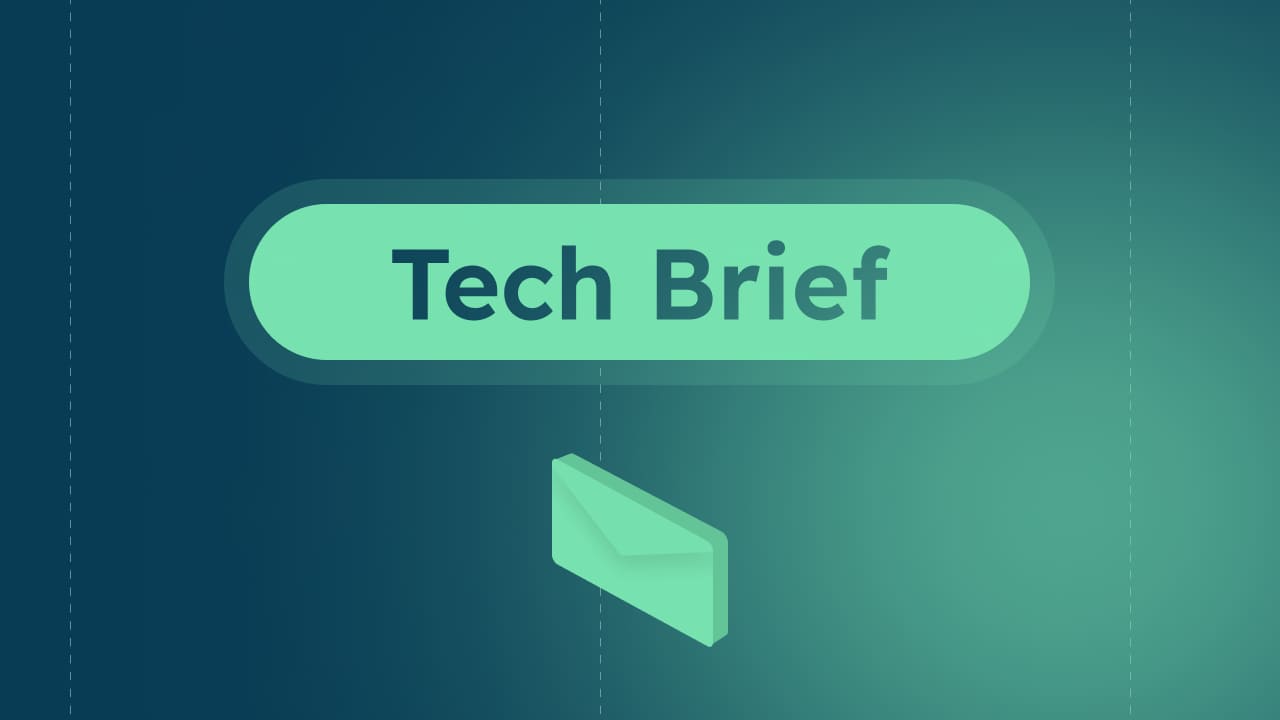|
Talking Telematics is a series of interviews between Philippe Moulin, CEO of DriveQuant, and insurance insiders. The topics are exclusively related to telematics and the benefits of the technology for the motor insurance industry. The following interview is based on a podcast recorded by SCOR. Graham Johnston, Global Product and Innovation Manager at SCOR, interviews Philippe Moulin, CEO of DriveQuant. The transcription has been edited for readability. |
Graham: Thank you for joining us today. I am Graham Johnston. I work as Global Product and Innovation Manager at SCOR. I am very pleased to welcome back Philippe Moulin for the second part of the show. The first part was dedicated to distracted driving. Today, we’re going to talk about eco-driving. Let’s start. So Philippe, there's so much we could say about eco-driving. Let’s begin with what it means exactly. Because eco-driving is on everyone’s lips but what exactly are we talking about?
Thank you Graham. Glad to be back on the show. So, you’re definitely right. There is a need to define what eco-driving really means. So, eco-driving is the adoption of a series of gestures and behaviours on the road in order to optimise fuel consumption, and therefore reduce CO2 emissions. Practically, there are two ways of doing this.
The first one is gestures. It involves basic things including doing an annual car check-up and avoiding using air conditioning with the open window. With simple things like that, you can reduce the energy consumption of your car.
The second way, which is our main focus at DriveQuant, is the driving behaviour. For instance, if you anticipate your brakings, your vehicle will use less energy. You will thus reduce the environmental impact of your mobility. The impact goes even further than ecological benefits, because eco-driving behaviours also contribute to reducing road risk. It has a huge social impact that should be much more emphasized.
Graham: Yeah, I think that's a topic we have long debated. If we look at the environmental aspects, how can we estimate the impacts of the different driving behaviours? For instance, can we know how much fuel could be saved by changing the way we drive?
What I can tell you, based on DriveQuant’s data, is that the maximum gain you can achieve in terms of fuel consumption is somewhere between 20% to 30%. Of course, it depends on the type of trips and on the road contexts. What we found is that on average, most drivers gain between 7 to 10%. These are the figures an insurer should advertise and keep in mind when launching an incentive program.
Graham: Let’s dig in in-depth data analysis. So perhaps you could just unpack for us a little bit about what factors impact whether it’s 7% or whether it’s 10% savings.
Yes. So, it’s quite complex because the impact depends on the road context. Let’s take highways for instance. In this particular context, the driving behaviour has only a limited influence because you reach and keep a constant speed. So, it's difficult to improve in terms of energy efficiency because the acceleration and braking phases are limited.
Basically, the energy consumption mostly depends on the velocity of the car. On highways, you can reduce your energy consumption, but it impacts the driving time. For example, if you reduce your speed and drive at 110 km/h instead of 130 km/h, you will reduce your fuel consumption by 20%. However, your trip will take longer. In urban environments, because you constantly brake and speed, the impact of your driving behaviour really influences your energy consumption, without impacting the duration of your trips. In France and other similar countries, the highway traffic counts only for 30% of the global traffic. So, reducing the speed limit on the highway doesn’t have a huge environmental impact. Instead, promoting eco-driving in urban environments should be a top priority.
Graham: Ok, so that leads me to ask you to expand a little bit more on driving in urban environments. Can you tell us exactly what kind of driving behaviours we’re talking about here? Because some people just think, there is really nothing much I can do. Especially if they own an automatic car and everything is managed by the car. So they don’t think that they can really act on fuel consumption. But it’s wrong, right, they can still reduce their fuel consumption?
Yes, of course. It’s important to underline to drivers that they can improve their fuel consumption without impacting their driving time. What they should try to do is to quickly reach cruising speed. You should not reach a velocity that is too high, you should try to maintain a constant speed for as long as possible, and anticipate the brakings. This type of driving is less aggressive than many other driving behaviours. If you adopt this behaviour, you will significantly optimise your fuel consumption without increasing the driving time.
Graham: Okay. If you had a magic wand and you were able to cast the spell over the drivers, what would their ideal behaviour look like in urban environments?
Well. The first phase should be a strong acceleration to reach a constant speed close to 30 km/h, followed by smooth brakings and stops. La Poste, the French postal service provider, led an experiment that demonstrated that drivers that had been trained in eco-driving practices managed to save 5% of fuel consumption. On top of that, the crash rates for these drivers decreased by 10% in the same period. There is an undeniable link between eco-driving and safe driving. It's not the same thing, but there's a link.
So what I want to highlight is that eco-driving is a virtuous circle. Likely, the drivers who have learnt eco-driving practices at work do also replicate these habits while driving their personal vehicle. It amplifies the benefits of eco-driving behaviours. As you can see, promoting and adopting eco-driving has many positive side effects.
To get a better understanding of the real benefits, we looked into our driving database. We found that most drivers improve their fuel consumption by 8% on average in urban contexts. And it reaches 12% on suburban roads. On average, drivers that adopt eco-driving behaviours and drive on all types of roads can expect around 10% of fuel savings. If you multiply this number by the number of drivers in France, the impact is huge. It can be very significant.
Graham: So what road do you think insurers should or could play in encouraging sustainable driving behaviours? How can we and the insurance industry begin to support this transition to more ecological driving?
I think insurers have an important role to play. Without insurance companies, people would not be able to travel using their car without risk. It's in the interest of the insurer to coach the drivers and promote eco-driving habits because, as I said earlier, the impact on their activities and the environment can be huge.
From a personal point of view, I believe that the first action that should be implemented is convincing the drivers of the benefits of sustainable driving. For some people, it’s hard to see the benefits of changing their driving habits. So insurers need to offer incentives in order to encourage drivers to adopt eco-driving behaviours. It’s a requirement. Hopefully, many options exist. For instance, what we recommend is the launch of a road safety program. Thanks to mobile telematics, the insurance companies can measure the impact for each driver taking part in the program and accurately monitor the reduction of C02 emissions.
Graham: Absolutely. Just picking up on that then. I mean, telematics has been around for 20 years now. But, it has only begun to increase in popularity quite recently. It hasn't taken off quite as fast as some people had predicted. And yet, when we discuss some of the findings today and the advantages to drivers, insurance companies, reinsurers and also to society at large, it sounds like this technology brings many many insights and positive opportunities to make the world a better place. Philippe, from your own experience, what are the main challenges to the adoption of this technology?
Right now, I think that adopting mobile telematics is more a question of interest or willingness than anything else really. I mean, smartphone telematics is much less expensive and easier to deploy than other technologies such as telematics boxes, which sometimes require professional installation. It’s quite simple to start a mobile telematics program because the technology is already widely used to collect driving data and to provide coaching. At DriveQuant, we think that smartphone telematics is a very interesting opportunity for all insurers to take an active role in building a sustainable world and reducing the environmental footprint of their activities. This is really one of the missions we're trying to achieve as a company.
Graham: Great Philippe. Thank you for joining us again today. SCOR really wants to join you on that mission. We too are concerned by helping the environment and really the technology is there. It's a matter, as you say, of interest or willingness. And I think the SCOR & DriveQuant partnership will result in, hopefully, the adoption of many more telematics programs. So thank you everyone, I had a nice time leading this discussion with Philippe. See you next time!



![[2025 Edition] The Guide to Connected Insurance](https://blog.drivequant.com/hubfs/7-%20%5BEdition%202025%5D%20Le%20Guide%20de%20lAssurance%20Connect%C3%A9e.png)
